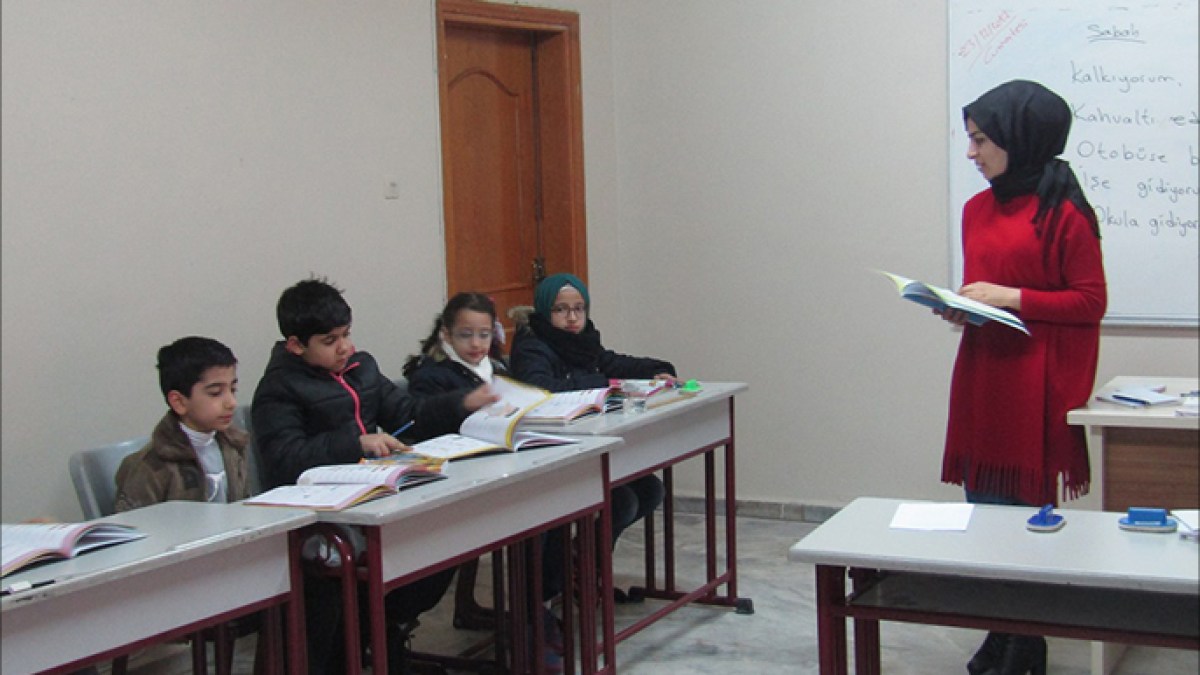play videoplay video
Video duration 02 minutes 28 seconds 02:28
Learning the languages of their countries of origin by the children of immigrants constitutes “an effective factor and facilitator of their integration process” in the countries that host them, according to what experts confirmed during their discussion in Beirut of the issue of Arab communities learning the language of the dād in immigrants during a symposium held in cooperation with UNESCO on International Mother Language Day, corresponding to February 21. February every year.
This topic is the focus of a book entitled “How Do Our Children Learn Arabic in Immigrants? Experiences and Aspirations,” launched by the Arab Thought Foundation, which held this symposium to discuss it in cooperation with the UNESCO Multi-Sectoral Regional Office for Arab Countries in the Lebanese capital on the occasion of this international day commemorated by the international organization.
Improving Arabic
The book sheds light on the reality of teaching the Arabic language to children of immigrants, “documenting a set of practices and experiences in Europe, Africa, Australia” and North America, and monitoring the difficulties and challenges in this field.
This work presents recommendations and proposals aimed at “upgrading the level of teaching and learning Arabic among immigrants so that it is an effective factor and facilitator of the integration process,” according to what the Director General of the Arab Thought Foundation, Professor Henry Al-Awit, told Agence France-Presse.
Al-Await, who supervised the preparation of the book, added, “We chose to launch the book on this occasion to remind us that the process of teaching the mother tongue is not for the sake of isolation, but for the sake of interaction, enrichment, and integration,” calling on the host countries to be aware of this.
He noted that "the reality of the Arabic language among immigrants is diverse for various reasons, the first of which is the demographic nature of immigrants belonging to different generations, and the most recent of them is the category of immigrants due to wars, conflicts, and attacks."
Noting that waves of immigration have increased from several countries, especially Arab countries, he saw that “there is a growing interest in teaching children the language of their fathers and grandfathers.”
Teaching Arabic
He said, "In general, children of Arab immigrants cannot learn the Arabic language in the immigrant countries unless there is a desire from the parents."
According to his classification, these are “three categories. Some of them are aware of the importance of teaching the Arabic language, some of them do not pay any attention to the subject, and the third category completely cuts off relations with the mother country.”
He added, "The most important party in learning the language is the family for several reasons, the first of which is maintaining communication between grandchildren, grandparents, and relatives, and the second is the religious dimension, as most of the Arab communities in the immigrant population belong to the Islamic religion associated with the Arabic language."
The third dimension, according to Al-Await, is related to “identity and belonging. The stranger in a new environment is conflicted by two desires, one of which is to integrate into the host environment in terms of language, customs, traditions and culture, and the second is to assert himself so that his interaction with the new society is not from a position of weakness.”
The fourth dimension is that “acquiring the Arabic language gives members of Arab communities an advantage in terms of their ability to find a job,” according to Al-Await.
He pointed to "efforts made by Arab cultural associations, bodies, centers or attachés, Islamic religious authorities, and sometimes Christian ones, as in Australia and Latin America."
But he saw that "teachers who impart Arabic language skills generally do not have sufficient preparation and training."
He said that what is required is more effort in terms of programs, books, used tools and techniques, and more focus on using modern technological means.
Arabic is known as a language with distinct characteristics represented by the wealth of its vocabulary, the richness of its structures, the beauty of its expression, etc., or in terms of its ancient historical cultural role, and hence its suitability for every time and place. However, the challenges facing it are many, especially in the age of computers, informatics, cybernetics, the conquest of space, and the digital technical revolution. .
In his study published by Al Jazeera Center for Studies entitled “The Arabic Language... Stormy Challenges and Modest Confrontation,” the late critic, linguist, translator, and academic Hossam Al-Khatib (1932-2022) wrote, saying that what has been accomplished so far in the service of Arabic is nothing compared to the succession of challenges and the speed of their expansion, such as snowball.
Source: French

